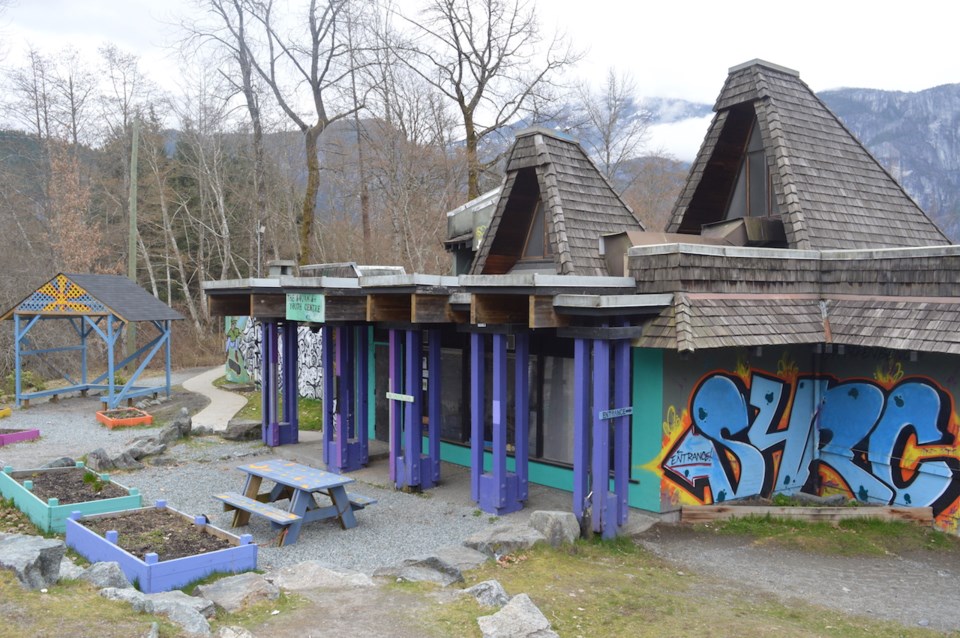The Buckley Avenue affordable housing project is closer to becoming a reality, as the District has found a partner for the development.
As of Dec. 18, council has directed municipal staff to negotiate an agreement with Sea to Sky Community Services.
“I think this is an important step in getting this project off the ground,” said Mayor Karen Elliott told The Chief.
“While council has an important role to play in facilitating affordable housing in the community, I don’t think it should be operating and become a landlord. So finding a partner in this is great.”
This partnership is crucial, as it’s a precondition to getting funding for the project.
At least some of the money from BC Housing will be coming in the form of promissory notes, which are intended to be added on to a mortgage.
However, the District by itself wouldn’t be able to take on a mortgage, as it would affect the District’s ability to borrow for other projects, as well as create liabilities.
District staff told council the solution was assigning the development’s mortgage to Sea to Sky Community Services.
As a result, the mortgage is expected to be under Sea to Sky’s name.
From an operational standpoint, Sea to Sky will be operating and managing the building.
A 60-year lease agreement will also be signed between the two parties.
The society will essentially own the building for the duration of the term.
The District will still own the land, and the building will eventually be returned to the municipality.
As part of the agreement with Sea to Sky, the District will, generally speaking, have an arm’s-length involvement in the development once everything is built.
The society will be take care of the day-to-day functions.
A staff report presented this meeting recommended that $30,000 of new funding be freed up for the project.
Combining that with up to $50,000 of leftover funds from this fiscal year should provide enough to move the project through its next step.
Back in November, a staff report said that at the time, all expenses related to Buckley were put on the tab of an almost-$200,000 grant from BC Housing and CMHC. At that point, $170,000 had been spent.
Recently, the province announced that BC Housing would be throwing in $7.6 million in funding from its Community Housing Fund program for the design and construction of the facility.
The construction of the project is expected to cost about $20 million.
Youth hub?
During the council meeting, there was also news about what would be a popular amenity in the facility.
District general manager Gary Buxton said that there issues the District “will need to resolve” with BC Housing with respect funding the proposed youth hub in the building.
The provincial authority, which is footing part of the bill, indicated the capital funding of the youth hub was not included in the funds it gave to the municipality.
Elliott expressed concern, as one of the draws of the Buckley project was that it would also ultimately replace the aging youth centre by the skate park.
“This was seen as an opportunity to meet two goals,” she said.
Buxton said BC Housing asked to provide a rationale for assigning the youth centre’s costs.
“That’s what we intend to do,” he said.
Longer-term housing solutions
In a separate motion, councillors also asked staff to explore the possibility of a longer-term partnership that would take the load off the District in spearheading the creation of new affordable housing projects.
“I’m not sure that I feel it’s a municipal government’s role to be hustling the next land deal [for affordable housing],” said Elliott, speaking of the District’s long-term affordable housing situation.
“We’ve seen how much time it takes our staff to manage a project like this, and then affordable housing technically is a senior level of government’s responsibility. If we had an arm’s length partner that was doing that work on behalf of the District — that’s the capacity I want to explore with a partner.”
That organization could also manage the new units as well.
The suggestion had similarities to recommendations made in 2014 from the Squamish housing options group, said Coun. Eric Andersen.
“There’s still a need out there for some type of co-ordinating entity,” Andersen said.
Coun. Jenna Stoner said this tied in well with previous discussions wherein a partnership could be fostered in the interim before a critical mass of affordable units is available.
Once that number — some estimates pinned it at about 100 — is hit, it may be financially sensible to shift to some sort of housing entity or agency.
Anything below that number may not efficiently pay for the administrative overhead.
These sentiments were also similar to those presented in the M’akola report, in which the housing consultant made suggestions to the District on how to solve its affordability crisis.




